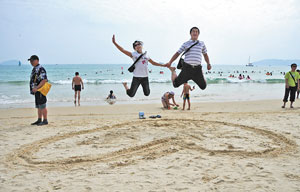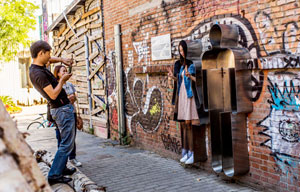Hillsides of gold, red and white
 |
|
Wuyuan draws a big crowd of art students. Photo by Zhang Zixuan / China Daily |
For tourists seeking a challenge, a bicycle ride to the village may be just what they need.
Since homes in Big Likeng are made of wood, many of them did not survive the fires that have broken out throughout the centuries. But their ruins, navigable through moss-covered flagstone paths, remain intact.
The village has become a favorite destination of art students and photographers, who sometimes stay for months documenting the majestic old architecture.
At the village entrance, visitors will often find local farmers chatting with each other. They're usually willing to serve as tour guides at a cost of 20 yuan ($3.20) for every three hours.
They'll take visitors through Big Likeng's narrowest alleys, show them the village's most important buildings and point out the best spots for taking photos.
Sometimes they might even help tourists catch a harmless brown bee, and put the insect between the visitors' cupped palms for an instant "hand massage". At the same time, they'll tell them which type of bees can sting without mercy.
When the guides finish their job, they return to their everyday routine of playing with their children, drying vegetables under the sun, repairing shoes or washing clothes in the river.
When night falls, Big Likeng, along with Wuyuan's other villages, falls silent, like an ink landscape painting waiting to be viewed for another thousand years.
















